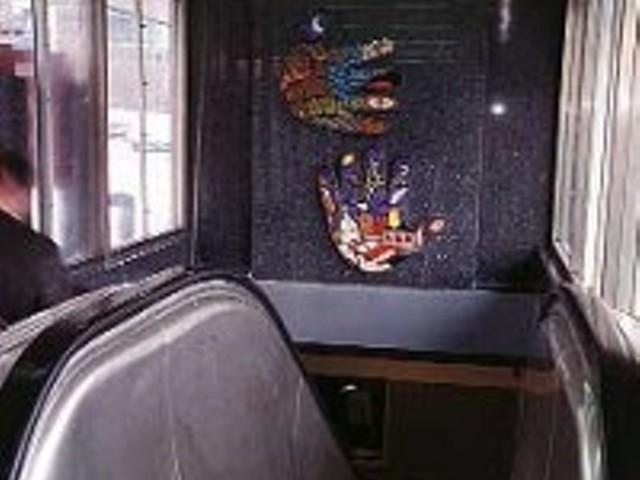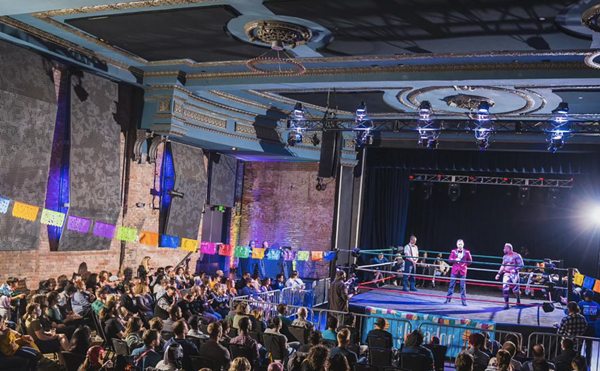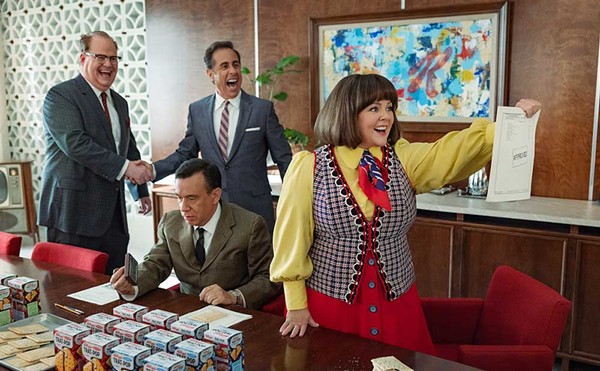Few and far between are the kind things one can say about Jesse Helms, but credit must be given where credit is due. The assault on the National Endowment for the Arts, led by Helms and his moralizing cavemen, revealed to Middle America the dark secret that the art communities of the coasts hitherto kept to themselves. To wit, the emperor had no clothes. A crucifix in a jar full of piss, no matter its shallow shock value, spoke volumes about how conceptual bullshit had hijacked talent in the arts. The proportion of grant applications to rubbish produced was frighteningly high.
Only now are the few diamonds of the Helms era making their way to the hinterland. A minor gem is the work of Tseng Kwong Chi, Asian-American performance artist. Invited out for supper at a Manhattan restaurant, Tseng could find nothing to wear but a gray Mao suit. That evening, he was treated with great deference and the rest, if you will, was history. Tseng milked his masquerade for all it was worth, traveling here, there and everywhere to snap himself in the midst of the West’s most cliched cultural icons such as Niagara Falls, Disneyland and Mount Rushmore.
Technically, the photos in "The Expedition," the Art Gallery of Windsor’s show of Tseng’s work, are adept while remaining simplistic, which one suspects is exactly the point -- high-gloss postcards from the banal. This sardonic aesthetic leads one directly into the political dimension of the work.
Tseng slyly addresses the conflicting sentiments of the West toward the East. Romantic illusions of exotic oriental lands co-exist with fears of the yellow hordes that populate them. Tseng, resplendent in his Mao suit and Alphaville shades with shutter release conspicuously in hand, further forces the issue by wearing the same flat expression in every shot, evoking a Chinese mandarin come to survey the much ballyhooed West and decidedly unimpressed with what he sees.
It’s a one-note performance to be sure, but with enough cheek to carry off the gag over some 150 photos. Tseng died of AIDS in 1990, less than half a year after the Berlin Wall came down and the Tiananmen Square massacre. One might say he made his exit in the nick of time, before the New World Disorder laid waste to the quaint Cold War frames of East and West that informed the work. Still, how would Tseng keep his act up and running were he still alive? Certainly, he’d have to trade in his costume. Mao jackets sell for $500 in New York these days. And the cadres in Beijing now favor the double-breasted suits all the rage among vulgar cognac swillers of the West.
In his final photographs, Tseng eschews tourist traps and takes in natural wonders such as the Grand Canyon. The photographic style is decidedly more painterly than postcard. At last we see a man, not a mannequin, communing with nature, not artifice. We are in the presence of an awed traveler. The tourist has gone home, unable to maintain his illusion of indifference.
E-mail comments to [email protected]




